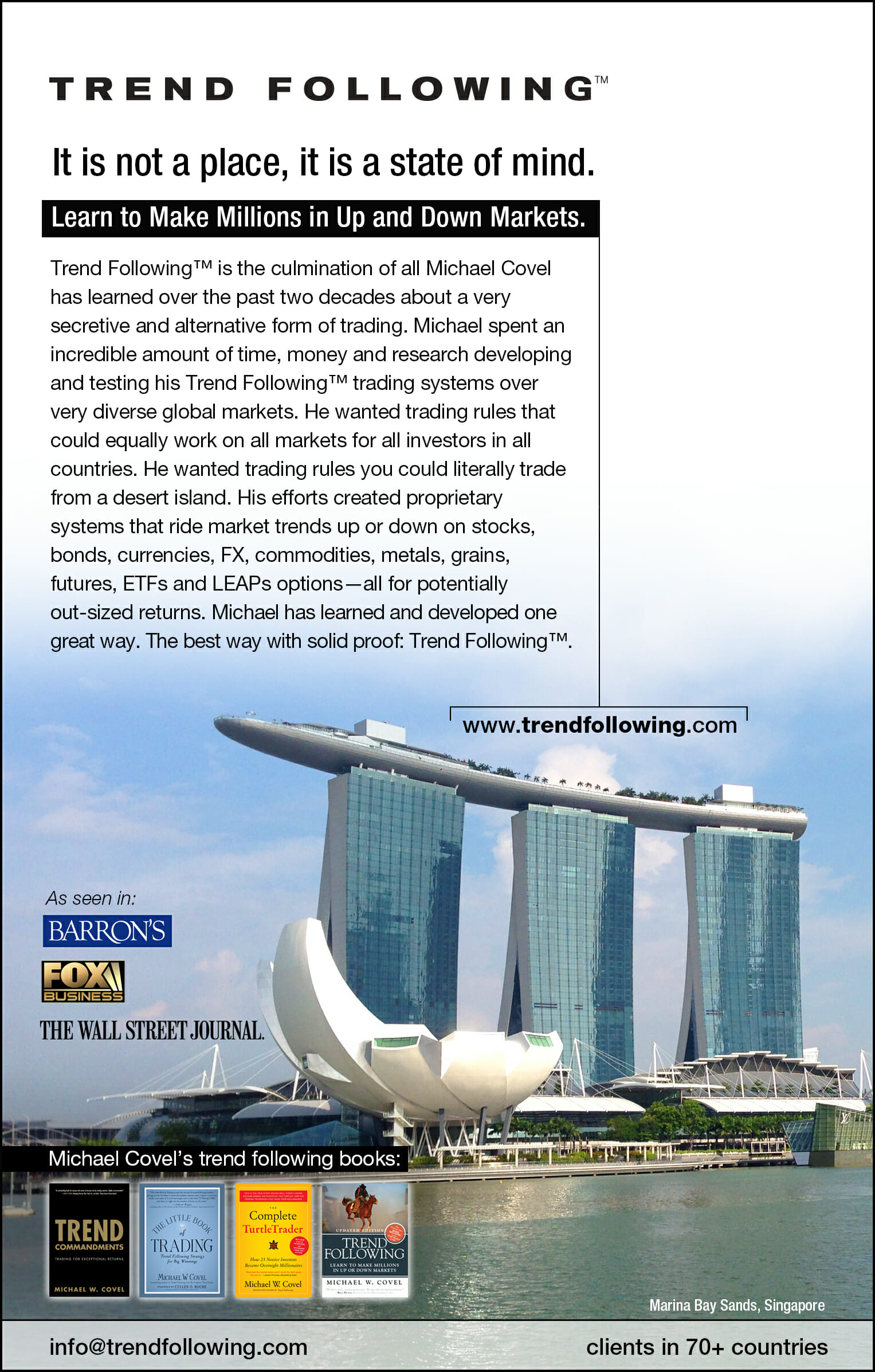Kenneth Tropin, Chairman of Graham Capital, offered food for thought at a presentation every trader should absorb:
But most long-term trend following systems traders are always doing something that is very, very difficult to do discretionarily — which is, waiting for a market to make its new highest price ever and then get in it. It’s never this feeling of: Oh, I really bought this right! You always have a feeling on every trade of: I really bought this wrong! After 20-something years of doing this, that is a profitable thing to do, believe it or not. But nonetheless, systems traders are clearly not front-running market opportunities. They are following them; and that’s why they’re called trend-followers… Trend following systems are in general trying to do the following: they are trying to determine, in all of the market and macro events that happen every day, which of this price behavior is really a trend or is an emerging trend that’s happening, and which of what’s going on here is really noise. The art and science of a system is to be able to stay out of the noise and get involved in the right trends, hold those positions in the right trends until they ultimately fail. And every trend ever has always failed. And be able to make sure that when the trend fails, you have taken away some profit. By definition, trend followers never take peak profits, right? Because you’re always waiting for that market to tell you the trend is over. So of course you’re always giving back some unrealized gains… But nonetheless, there’s no question that you want to invest in trend following with a system. That system, and I’ll give you a very simple one, is: we have a model that we’ve designed and we can share with people who are interested…It’s a trading model that we applied to the Zurich index of long-term trend following. The basic model is so simple. You take your portfolio, you put it in equal thirds. I have $100 million to invest — one pot is $33 million and so on. Month one: I’m only looking at the $33 million and I’ll look back at the Zurich index and I want to see what the Zurich index has gone over the last 3 months. If that Zurich index is profitable by more than 2%, I don’t invest. I look back the next month — wait 30 days. Now let’s say that Zurich index is down more than 2% on the trailing 90 days, that’s when I add my capital. Once I get fully invested, if you always use this approach of looking back 90 days, and increasing your allocation when the trailing 90 day performance is negative, and slightly decreasing your allocation when the trailing 90 day performance is positive, you will improve — if you just look at the Zurich index — the nature of the return of that index, the nature of the return of that index by about 15-20% on a risk-adjusted basis. Real simple. Takes away all the emotion…
At a presentation he was asked, “Now, a computer has beaten the chess master, so we all have an appreciation of how much a computer can do. So my question is briefly — how much do each of you delegate to your computers and how much do you use your judgment?”
That’s a great question, and it’s one of the most widely misunderstood issues in the business. There are some important things that we use a computer to do, and there’s some important things that we don’t expect it to do. What we use a computer for is to test ideas. When we decide, as human beings — and human beings create those ideas – and we decided that the computer’s output of testing those ideas makes sense and it has to be fashioned into a trading program or system, we can then use that computer to automate the execution and administration of how it handles markets. But one of the things that is a sure and absolute guaranteed road to failure is to ask a computer to design a trading system. They don’t do it at all. They’ll give you such data garbage that you can’t possibly ever invest in something that was designed by a computer and make money. So all of your ideas have to be based on market experience of a human being who has come up with a way that I might be able to take advantage of something I’ve seen in the markets, develop a model around those ideas, then ask the computer to test it for me. Then if it tests well and you want to use it, have the computer administrate it [or automate it].
Trend Following Products
Review trend following systems and training:

More info here.
